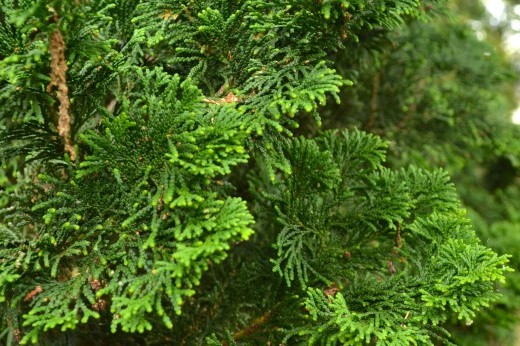Topics
Special Series
Garden Design
-
A Short History of Herb Garden Design
Whatever their design or intent, herb gardens are defined not by their organization but by the plants grown in them. If an herb is a plant with a use as a seasoning, fragrance, dye, fiber, or medicine, then an herb garden is a garden of useful plants. But don't be surprised to find species that have never had any practical application alongside the useful plants in today's ornamental herb gardens—some plants are simply too appealing to be excluded on purely technical grounds.
By Deirdre Larkin -
A Potted Water Garden—Beautiful Aquatic Plants in Containers
Want to grow water-lilies and other beautiful aquatic plants at home but don't have space for a permanent water feature? Cultivate them in pots instead.
By Joan McDonald -
Dwarf Conifers in Containers: Designing a Miniature Landscape
Dwarf conifers are perfect for building texture in—and giving permanent shape to—confined garden spaces such as patios or terraces. Though small, the plants can also help block wind and screen undesirable views.
By Joan McDonald -
Mad About Moss—The Simple Art of Moss Gardening
Hand-pulling blades of grass 'twixt thumb and forefinger, along with the occasional Ajuga plant, could be considered tedious work, but compared with the frantic pace my usual chores demand, it was an exercise in meditation. After removing every strand of grass, wild strawberry, and hawkweed shoot from the first square yard of ground, I was perversely gratified to see that the lawn was predominately moss and that my job would be time-consuming but not Sisyphean. I became obsessed with weeding my plot and started looking for opportunities away from housework and garden hoeing to sit and pick awhile.
By Joni Blackburn -
Rain Garden Plants
The following are some native plants suitable for rain gardens, listed by region. They are also attractive to butterflies, birds, and other wildlife. Be sure to choose species appropriate for the degree of sun or shade on the site.
By Janet Marinelli -
Rain Gardens: Using Spectacular Wetland Plantings to Reduce Runoff
Learn how to create a beautiful garden that will capture rain and reduce and reduce run-off.
By Janet Marinelli -
The Espalier Method: What You Need to Know
The French word espalier refers both to a plant grown in a pattern on a flat plane and to the vertical support, such as a wire, trellis, wall, or fence, that it grows against.
By Karen Davis Cutler -
Growing Sun-Loving Plants: Lessons From Nature
In nature, evolution has adapted plants to a variety of sun exposures and soil and moisture conditions. If a plant thrives in a particular spot in nature, it is likely to thrive under similar conditions in your garden.
By C. Colston Burrell -
An Autumn Pathway—Designing for Fabulous Fall Color
In this design I've chosen plants that exemplify the season and speak to me of autumn. Besides focusing on fall foliage, I've also included plants with strong architectural features or persistent seed heads that will carry a garden through to winter and beyond.
By Nancy Seaton -
Lofty Liatris—Drought-Tolerant Beauties for the Summer and Fall Border
Liatris is much more than a cut-flower-industry standard. It is, in fact, a group of wonderfully diverse and easy-to-grow perennials that can brighten up the outside of your home just as beautifully as they can the inside.
By Kim Hawkes




